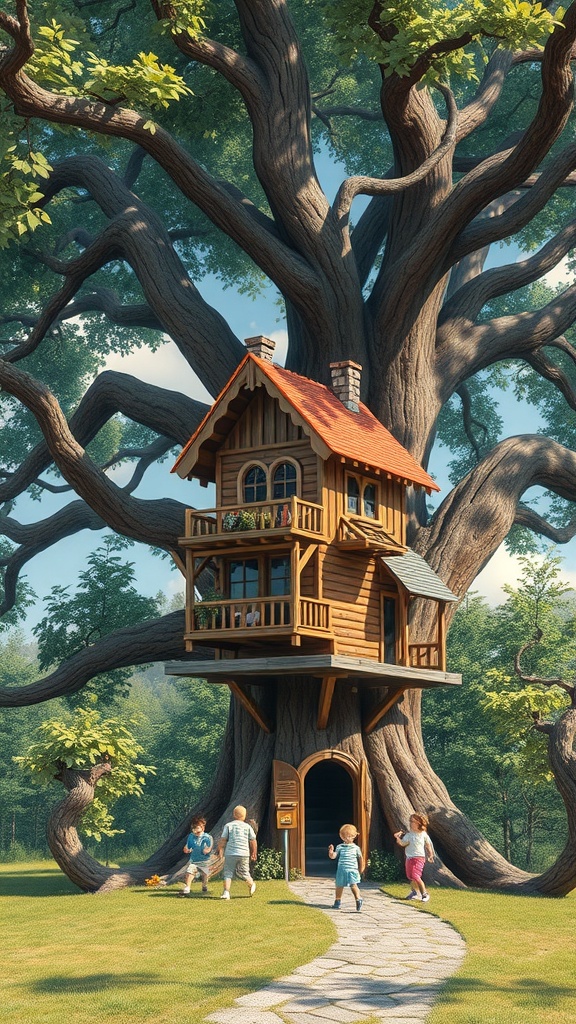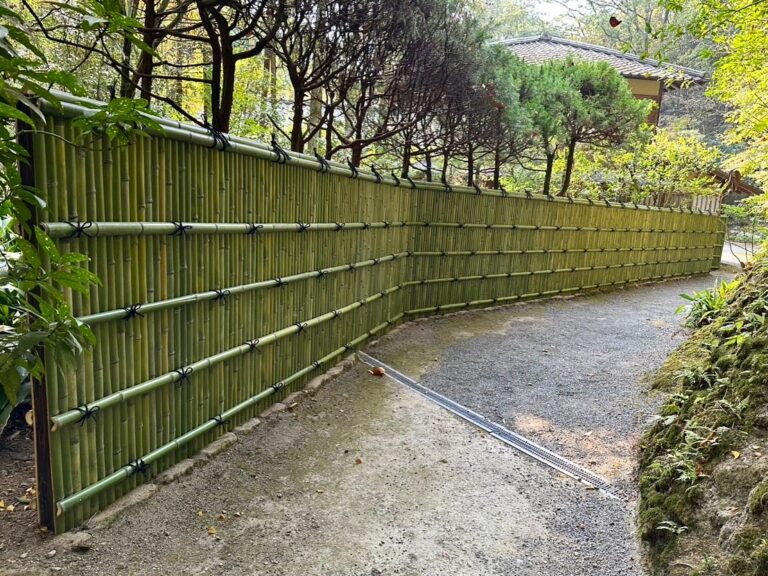15 Rainscaping Ideas for a Beautiful and Eco-Friendly Outdoor Living Space
If you’ve ever watched your yard turn into a mini lake after a good rainstorm, it’s time to discover the beauty and practicality of rainscaping.
Rainscaping is more than just managing stormwater—it’s a stylish, sustainable way to upgrade your back porch decor, boost curb appeal, and create a greener outdoor living experience. Whether you’re into lush garden beds or modern patio furniture vibes, these rainscaping ideas will help you blend form and function beautifully.
Here are 15 creative and modern rainscaping ideas to inspire your next outdoor makeover.
1. Rain Garden
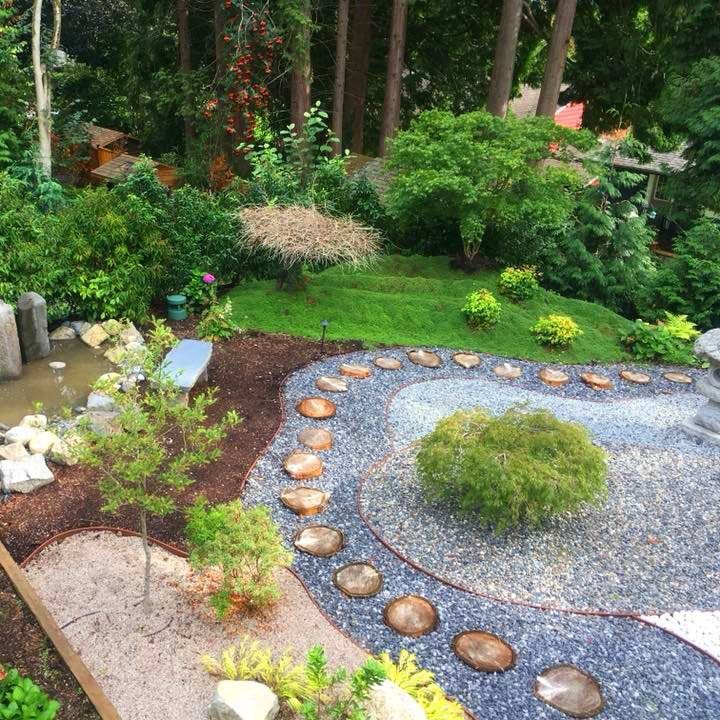
A rain garden is a shallow, landscaped depression that collects rainwater runoff from roofs, driveways, or patios and allows it to soak into the ground naturally. It’s one of the most beautiful and eco-friendly ways to reduce erosion and water pollution while enhancing your outdoor space.
Designing a rain garden gives you the freedom to choose vibrant native plants that thrive in both wet and dry conditions. Coneflowers, switchgrass, black-eyed Susans, and sedges add bold textures and colors, creating a living centerpiece for your backyard.
To maximize efficiency and appeal, position your rain garden at a natural low point in your yard or near a downspout. Use deep-rooted plants, a mix of mulch, and stones to slow down water and prevent overflow. It’s functional, low-maintenance, and aligns perfectly with modern back porch ideas.
Besides managing runoff, rain gardens attract butterflies and pollinators, turning your landscape into a mini wildlife haven.
2. Permeable Pavers
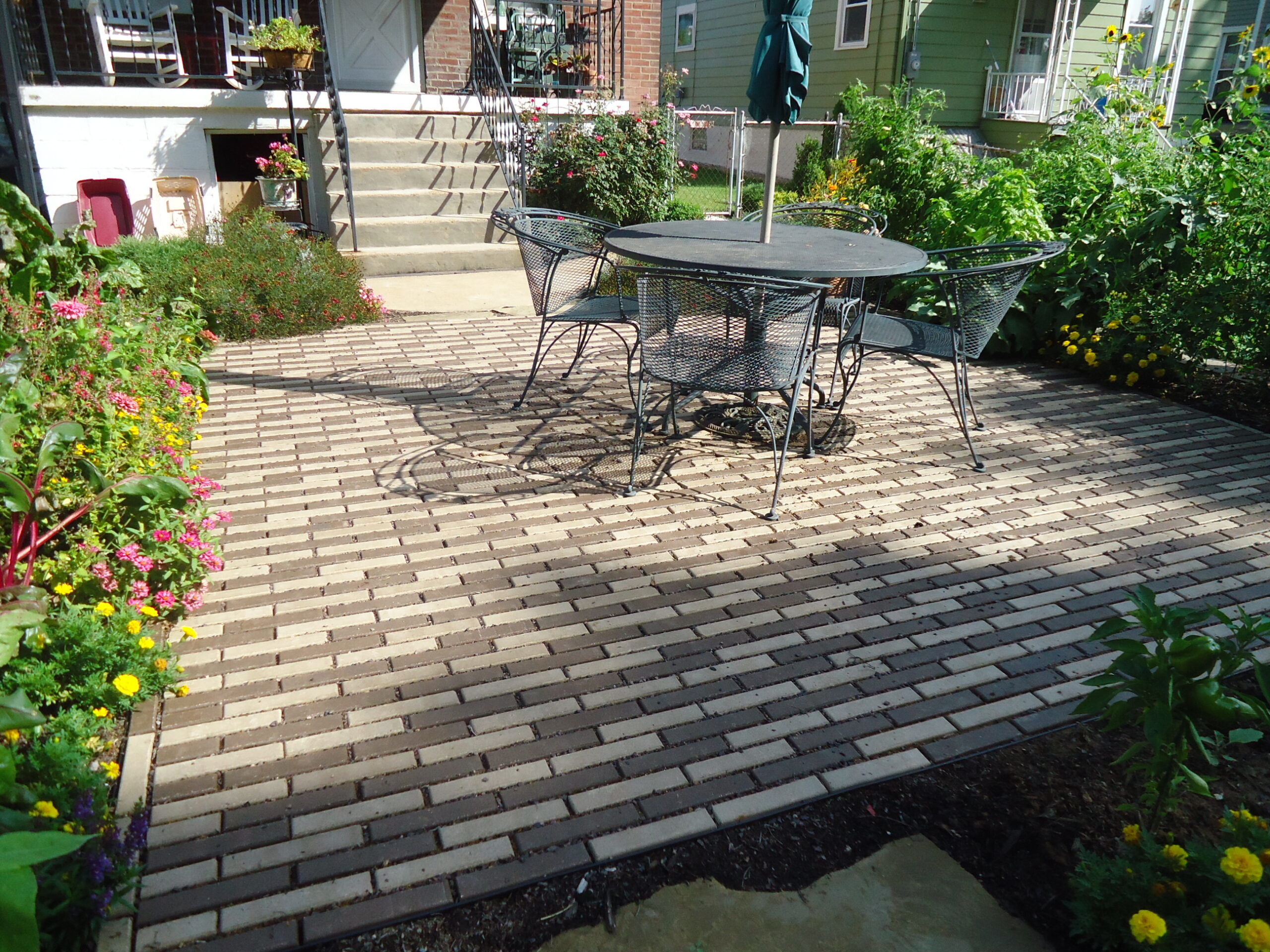
If you’re redesigning your patio or driveway, consider permeable pavers as a stylish and effective rainscaping option. These specially designed pavers allow water to seep through the surface into the ground below, rather than flowing into storm drains.
Permeable pavers come in a variety of materials—concrete, stone, or recycled plastic—and styles, from contemporary grids to rustic cobblestone. They fit seamlessly into modern patio furniture setups and outdoor living aesthetics while reducing runoff and recharging groundwater.
Installation involves laying the pavers over layers of gravel and sand, which helps filter and store rainwater. You can even plant grass or moss between them for a softer, more natural look.
This solution offers incredible flexibility: Use them for walkways, driveways, or even your back porch decor flooring. It’s an eco-conscious choice that brings both function and flair to your landscaping.
3. Rain Barrels
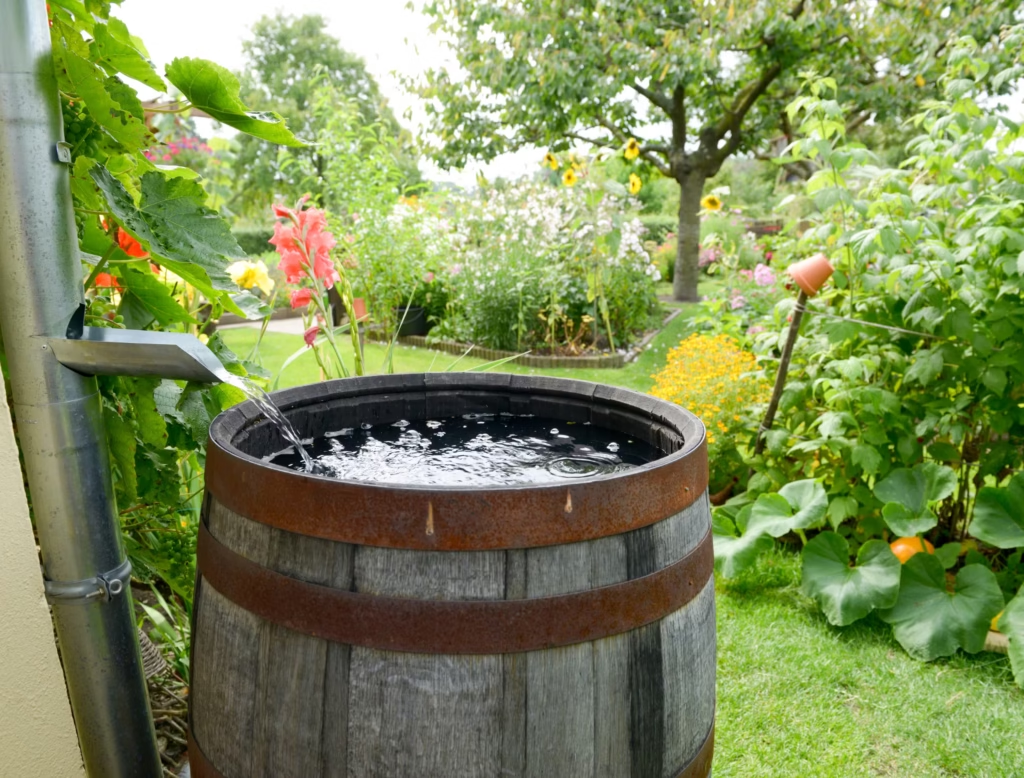
Rain barrels are a classic and budget-friendly rainscaping idea that has stood the test of time. These barrels collect rainwater from downspouts, storing it for later use in watering your garden, washing outdoor furniture, or even filling bird baths.
You can find rain barrels in many styles, including rustic wood-look barrels, sleek modern designs, or even DIY-painted versions to complement your back porch decor.
What makes rain barrels particularly appealing is their simplicity and versatility. You’ll not only reduce your water bill but also have an eco-friendly backup water source during dry spells.
Pair your barrel with a drip irrigation hose for low-effort watering or add a spigot to fill watering cans with ease. Whether tucked beside a garden shed or positioned as a porch accent piece, rain barrels can blend beautifully into your outdoor living space while serving a smart purpose.
4. Dry Creek Bed

A dry creek bed is a sculptural and functional feature that helps guide stormwater through your landscape in a controlled, erosion-free way. Think of it as an elegant garden stream—only without the water most of the time.
Using smooth river rocks, gravel, and larger stones, you can mimic the natural curves of a stream. During heavy rainfall, the creek bed channels water away from foundations, patios, or low-lying areas, reducing pooling and damage.
Add native grasses or ornamental plants along the edges to soften the look and encourage water absorption. Dry creek beds pair beautifully with modern back porch ideas, creating a Zen-like contrast with patio furniture and greenery.
Beyond function, they make stunning landscape features that require little maintenance and offer year-round appeal. It’s the perfect combination of art and sustainability.
5. French Drains
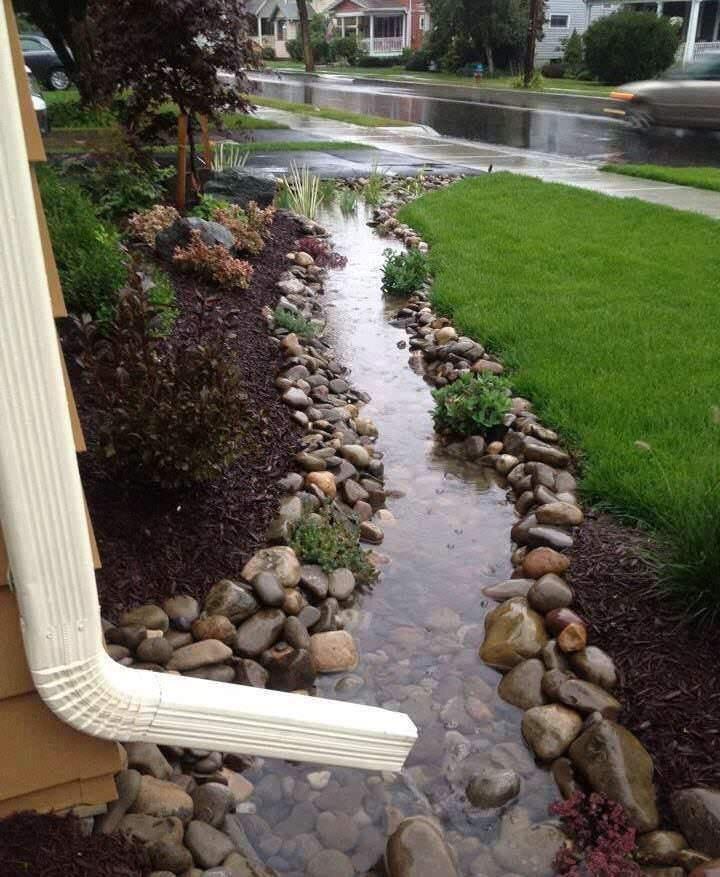
For more discreet rainscaping, French drains are a go-to solution. These underground trenches are filled with gravel and perforated pipe to direct excess water away from your home’s foundation, garden beds, or walkways.
While they’re hidden below ground, their impact is huge—preventing soggy lawns, flooding, and erosion. You can still make the surface attractive by topping it with river rocks or decorative gravel that complements your modern outdoor living look.
French drains work especially well in areas with heavy clay soils or flat yards where water has nowhere to go. By capturing and relocating water underground, you protect your landscape while keeping your design clean and uncluttered.
This system blends practicality with subtle sophistication, making it ideal for anyone who wants invisible water management without sacrificing style.
6. Green Roof Overhang

If you’re dreaming big with a back porch renovation or covered patio, consider a green roof overhang—a living roof system that absorbs rainwater, insulates your home, and enhances your decor all in one.
A green roof is built with layers of waterproof membrane, soil, and hardy plants like sedum, thyme, or creeping jenny. These plants soak up rain and reduce runoff while adding stunning natural texture overhead.
While more commonly seen in urban buildings, scaled-down versions are perfect for covered porches, pergolas, or even standalone garden sheds. This eco-friendly roof feature helps manage rainwater, lowers surrounding temperatures, and increases biodiversity.
Imagine lounging on your porch beneath a lush green canopy—it’s the epitome of outdoor living luxury, especially when paired with modern patio furniture and minimalist landscaping.
7. Swales with Plant Borders
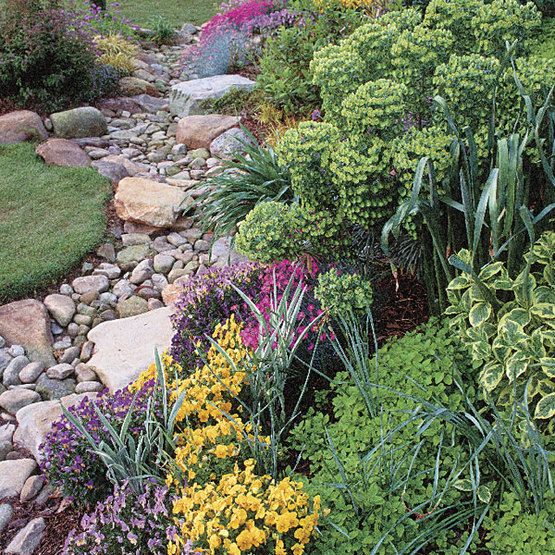
Swales are shallow, vegetated channels designed to capture and slow rainwater runoff. Unlike concrete gutters, swales are completely natural, working with the landscape to manage water while enhancing its beauty.
You can edge your swale with vibrant plant borders—think hostas, ornamental grasses, and blooming perennials that can tolerate both wet and dry spells. These swales gently guide water toward rain gardens or dry creek beds, preventing erosion and helping replenish groundwater.
They’re especially useful in large yards or sloped backyards where water tends to rush downhill. With a little planning, swales can look like a feature of a designer garden, blending effortlessly into your landscape.
This strategy fits perfectly with modern back porch ideas, adding dynamic visual lines to your yard and supporting a more sustainable outdoor lifestyle.
8. Rain Chains
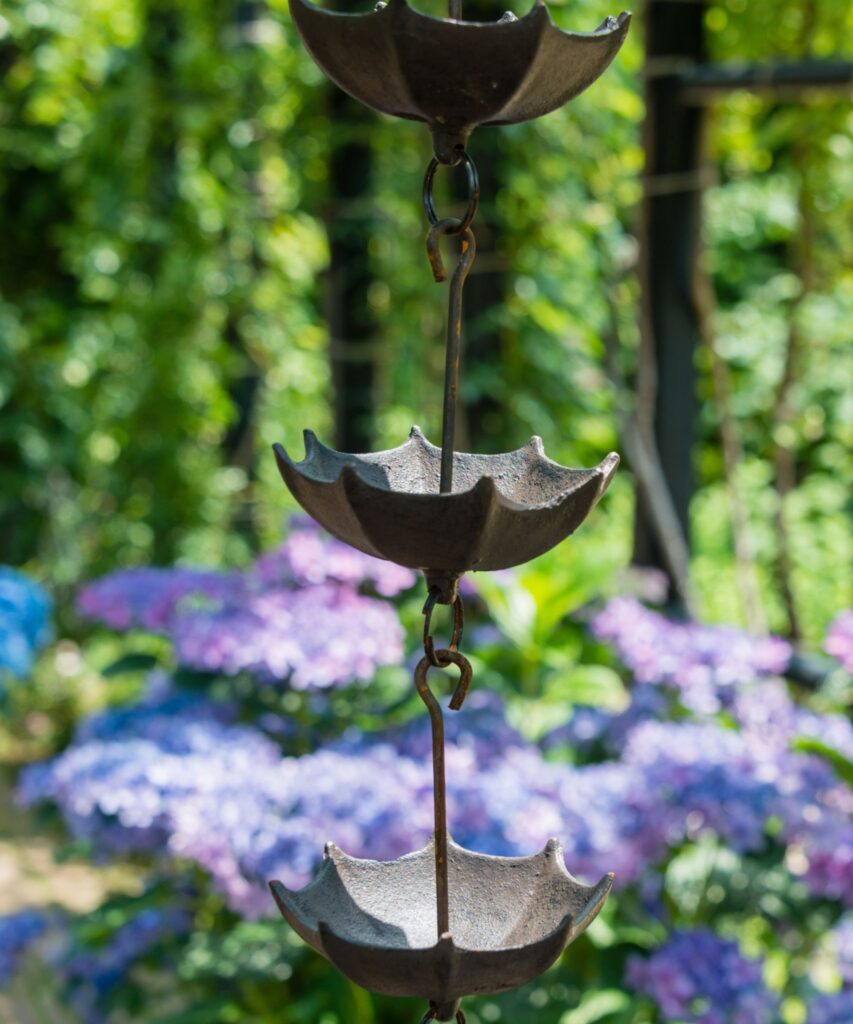
Swap out that boring downspout for a stunning rain chain—a decorative alternative that turns rain into a visual and audible experience. Rain chains guide water from your roof to the ground or rain barrel through a series of cups, links, or sculptural pieces.
They’re not just functional—they’re mesmerizing to watch and listen to. Whether your aesthetic is rustic, modern, or whimsical, there’s a rain chain design that fits your back porch decor.
Install them where they’re easily visible from your porch or patio seating area to enjoy the relaxing water flow during a storm. Pair them with a gravel basin, ceramic bowl, or rain garden below for efficient water collection.
Rain chains are an easy upgrade that adds charm, movement, and sustainability to your home’s exterior.
9. Mulch Trenches

Mulch trenches may sound simple, but they’re incredibly effective. These shallow trenches are filled with shredded bark or wood chips and placed strategically along slopes or runoff paths to slow down and absorb water.
Incorporating mulch trenches into your landscaping not only helps with water control but also improves soil health, suppresses weeds, and adds a polished look to garden beds or pathway edges.
Use them between garden zones or along hardscape elements to create natural drainage routes that don’t interrupt your modern outdoor living design. Their organic texture complements any type of back porch decor, especially when coordinated with natural stone or timber accents.
Plus, they’re low-cost and easy to DIY—ideal for homeowners looking to make an impact without breaking the bank.
10. Bioswales with Native Plants
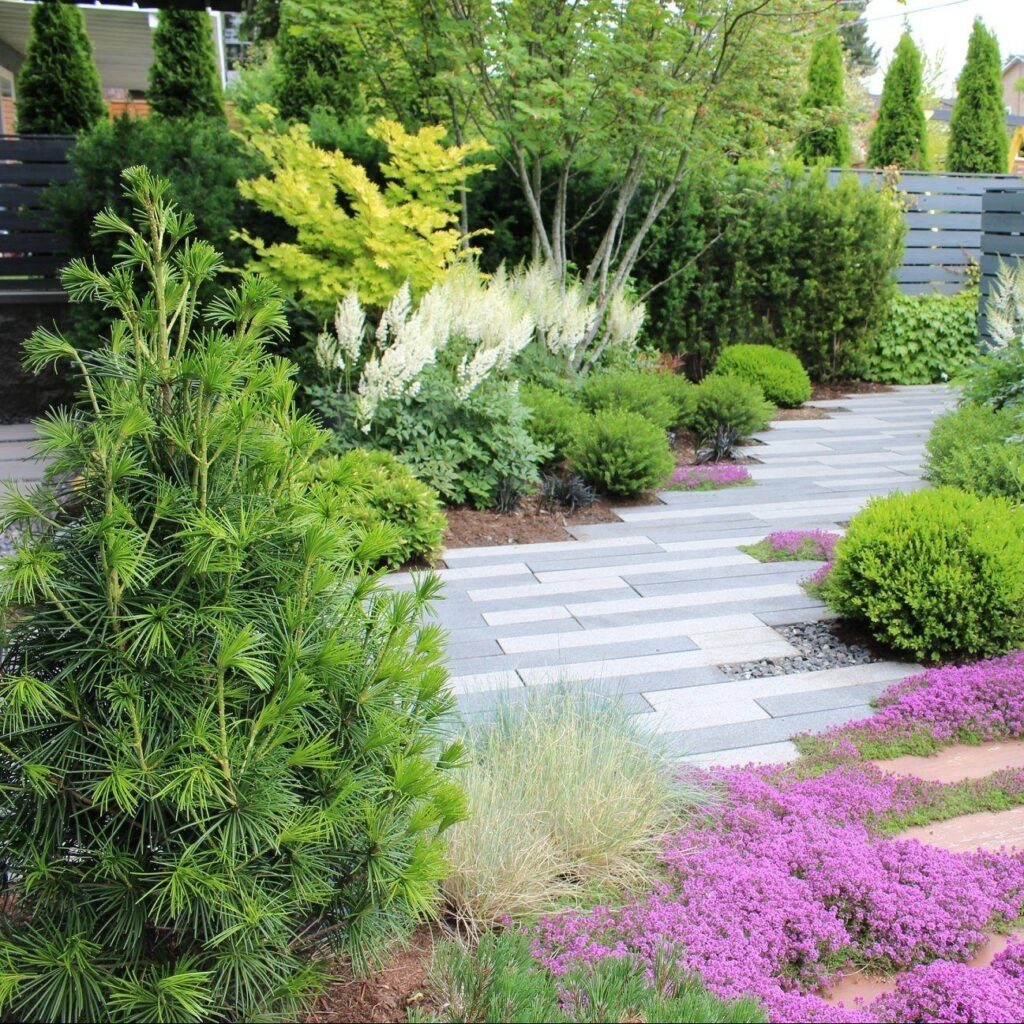
Bioswales are like supercharged swales—they’re engineered to not only capture runoff but also filter pollutants through layers of soil and vegetation. Lined with hardy native plants, bioswales add both eco-function and curb appeal to your yard.
You can design a bioswale to fit along driveways, sidewalks, or the edge of your lawn, directing water through a system that naturally cleans and absorbs it. Choose low-maintenance plants like blue flag iris, milkweed, or Joe Pye weed for a beautiful, butterfly-friendly touch.
Unlike conventional drains, bioswales give you a chance to make a style statement while helping the environment. They integrate well with modern patio furniture areas, framing your yard with lush texture and movement.
Their natural appearance and purpose-driven design make bioswales a smart choice for eco-conscious homeowners looking to balance sustainability with modern charm.
11. Rainwater Harvesting Systems
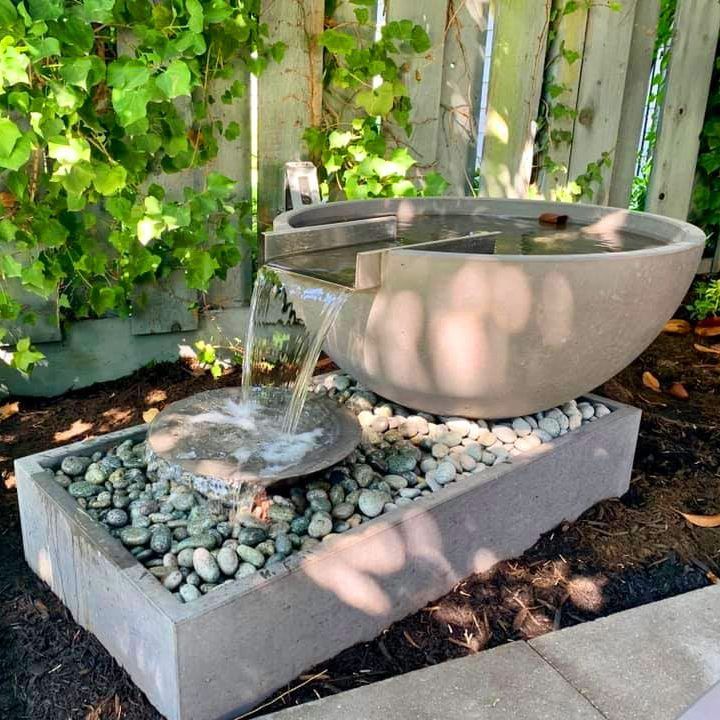
Rainwater harvesting systems are a great way to store rainwater for later use, reducing your reliance on municipal water supplies. These systems often involve larger collection tanks or underground cisterns that capture and store water from your roof.
Whether you’re using the water to irrigate your garden, wash your car, or top off a pool, harvesting rainwater can save you money and help conserve a valuable resource. In addition to reducing water bills, rainwater is often gentler on plants than tap water, which can be laden with chlorine and other chemicals.
You can install a rainwater harvesting system alongside a rain garden, rain barrels, or permeable pavers, creating a holistic rainscaping strategy that offers maximum efficiency. These systems also fit well in modern back porch setups, especially when paired with eco-friendly décor or sustainable furniture.
Not only does rainwater harvesting benefit your garden, but it also reduces runoff and helps prevent flooding in urban areas, making it an excellent choice for environmentally conscious homeowners.
12. Gravel Drainage Systems

Gravel drainage systems are simple yet highly effective at managing excess rainwater in areas where traditional drainage systems may not be ideal. By using loose gravel, crushed stone, or pebbles, these systems allow water to flow freely through gaps and direct it into the soil below.
They are often used in driveways, around patios, and in places with compacted soil that doesn’t allow for easy water infiltration. Gravel drainage helps prevent puddles from forming and reduces the risk of erosion in problem areas.
With the right design, gravel drainage systems can also add an appealing, natural look to your outdoor living space. Imagine framing your backyard with beautiful, textured gravel paths or edging a garden with sleek stone features.
These drainage solutions are versatile, durable, and low-maintenance—an ideal choice for homeowners looking to blend form with function in a stylish yet sustainable way.
13. Living Walls

Living walls—also known as green walls or vertical gardens—are an innovative way to manage rainwater while adding a stunning focal point to your outdoor space. These walls are designed to support a variety of plants in a vertical arrangement, which naturally absorb rainwater and reduce runoff.
You can install a living wall on your back porch or patio, turning a dull fence or empty wall into a vibrant, lush garden. Plants such as ferns, succulents, ivy, or even vegetables and herbs can be incorporated into the design, allowing you to grow both decorative and edible plants.
Living walls don’t just help with water absorption; they also act as insulation, providing shade, reducing noise, and improving air quality. Their aesthetic appeal fits beautifully with modern patio furniture and can be customized to match your outdoor living vibe, whether you prefer a minimalist look or a more lush, tropical feel.
Whether you create your living wall with modular systems or go for a DIY approach, it’s an environmentally friendly and visually striking way to integrate rainscaping into your yard.
14. Grassed Swales with Infiltration Areas
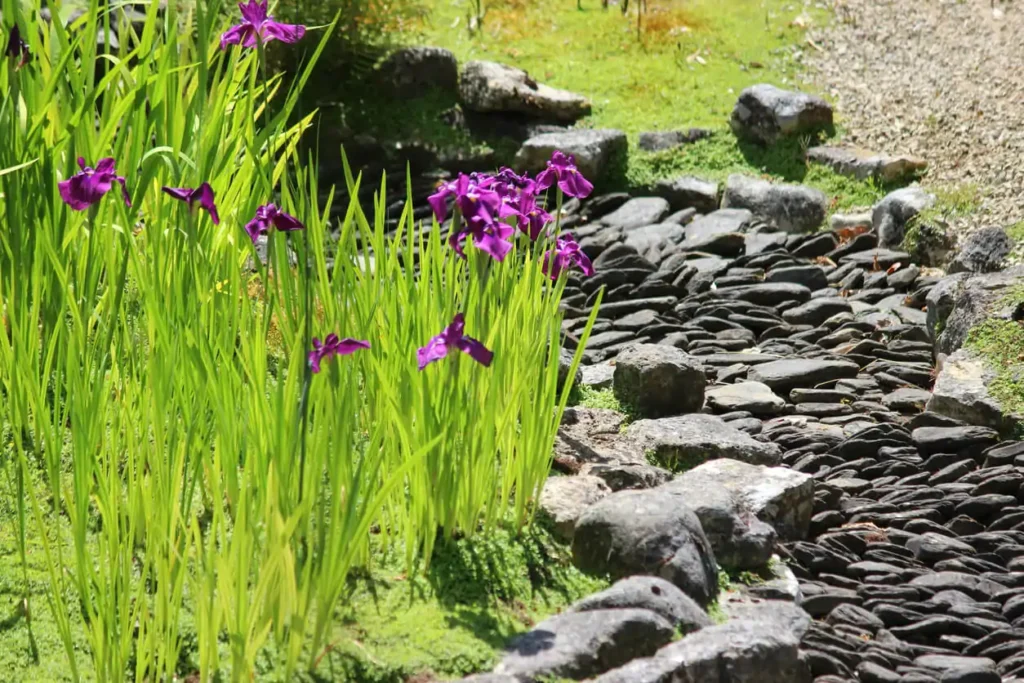
Grassed swales with infiltration areas are a larger-scale rainscaping solution that works particularly well for bigger yards or sloped landscapes. These swales, filled with grasses and vegetation, capture stormwater and slowly infiltrate it into the ground, reducing runoff and promoting groundwater recharge.
Unlike traditional swales, which rely primarily on a smooth, natural path for water, these swales include designated infiltration zones, such as depressions filled with water-loving plants. These zones ensure that water doesn’t pool but is absorbed back into the earth.
Grassed swales are incredibly efficient for managing large volumes of water during storms, making them a perfect addition to properties in areas with heavy rainfall. They provide an effective way to direct water away from buildings, driveways, and gardens, and their green borders add an aesthetic touch that enhances the landscape.
The design is flexible, allowing you to create a swale that complements your outdoor living space—whether you want it to flow naturally through garden beds or feature clean, straight lines for a more modern look.
15. Sustainable Landscape Design
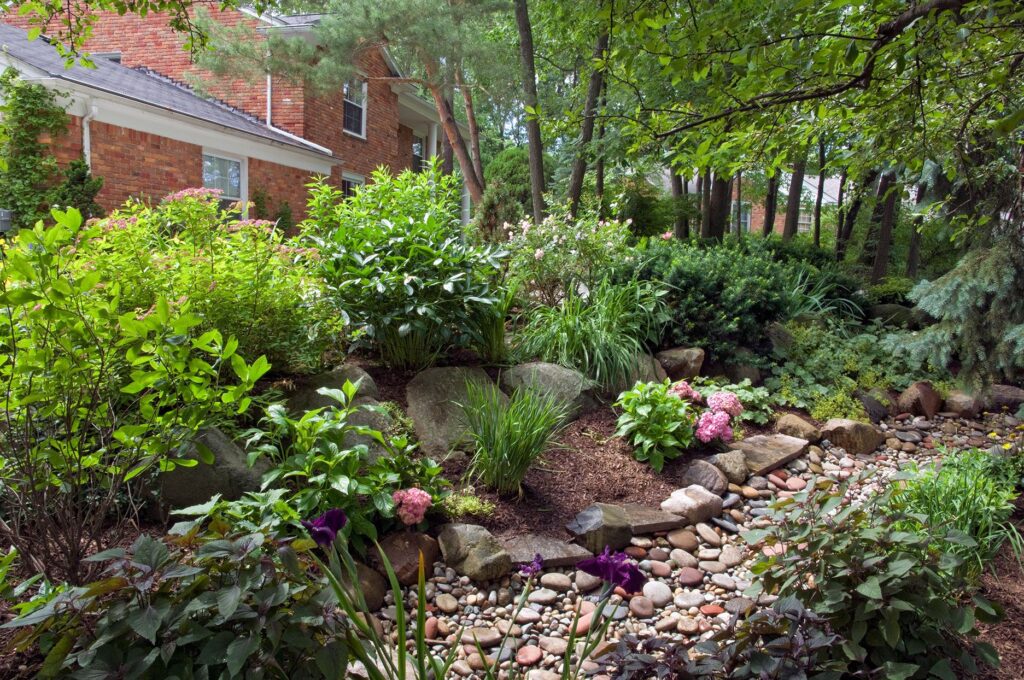
Sustainable landscape design is the culmination of various rainscaping ideas into a cohesive, environmentally friendly plan that incorporates water conservation, native plants, and low-impact materials. This design philosophy focuses on using eco-friendly practices to manage rainwater while creating an inviting, sustainable outdoor space.
Incorporating techniques such as rain gardens, permeable pavers, and strategic plant placement, sustainable landscape design aims to balance beauty with function. By choosing plants that require less water and reducing impervious surfaces (like concrete), you’ll naturally improve the flow of rainwater through your yard.
This holistic approach to rainscaping transforms your backyard into a green, eco-conscious haven, reducing the need for costly irrigation systems and minimizing water runoff. Sustainable landscape design pairs perfectly with modern outdoor living trends, as it’s low-maintenance, stylish, and aligned with eco-friendly goals.
With proper planning, you can achieve a beautifully functional landscape that absorbs water efficiently while adding value and charm to your home.
Conclusion
Incorporating rainscaping ideas into your outdoor living space is not only a sustainable way to manage water but also a fantastic opportunity to enhance the beauty and function of your yard. Whether you’re opting for stylish rain gardens, creative permeable pavers, or eco-friendly living walls, each of these ideas offers practical solutions to address water runoff, erosion, and pollution—all while elevating your landscape.
By blending modern patio furniture with nature-based solutions like rainwater harvesting and gravel drainage systems, you can create an outdoor oasis that’s not only stunning but also eco-conscious. These rainscaping techniques ensure your backyard stays vibrant, functional, and ready to weather any storm.
As you plan your next outdoor project, consider integrating one (or more!) of these rainscaping ideas to improve both your yard’s resilience and aesthetic appeal. The possibilities are endless when you combine creativity with sustainability, making your home a perfect example of eco-friendly outdoor living.


